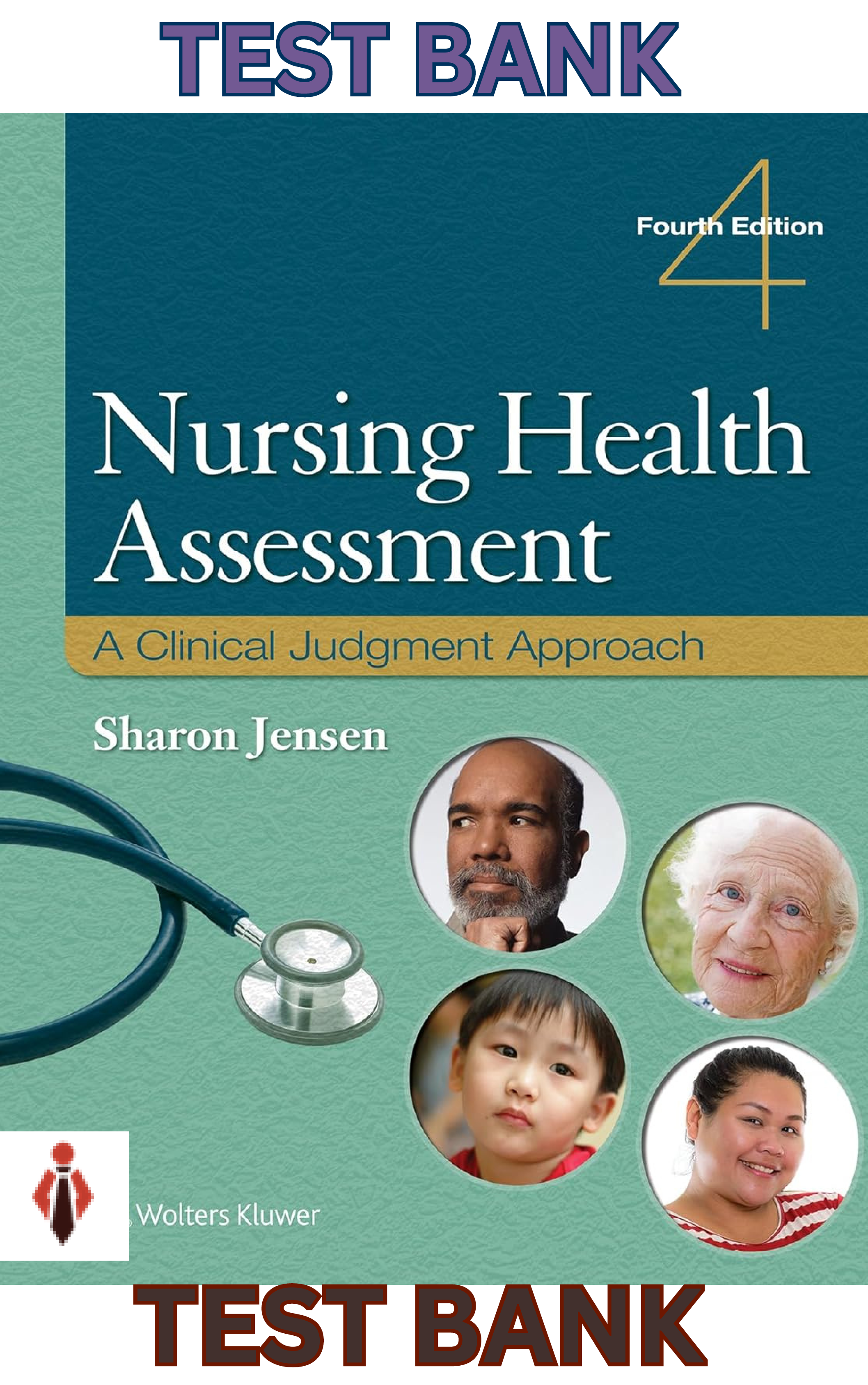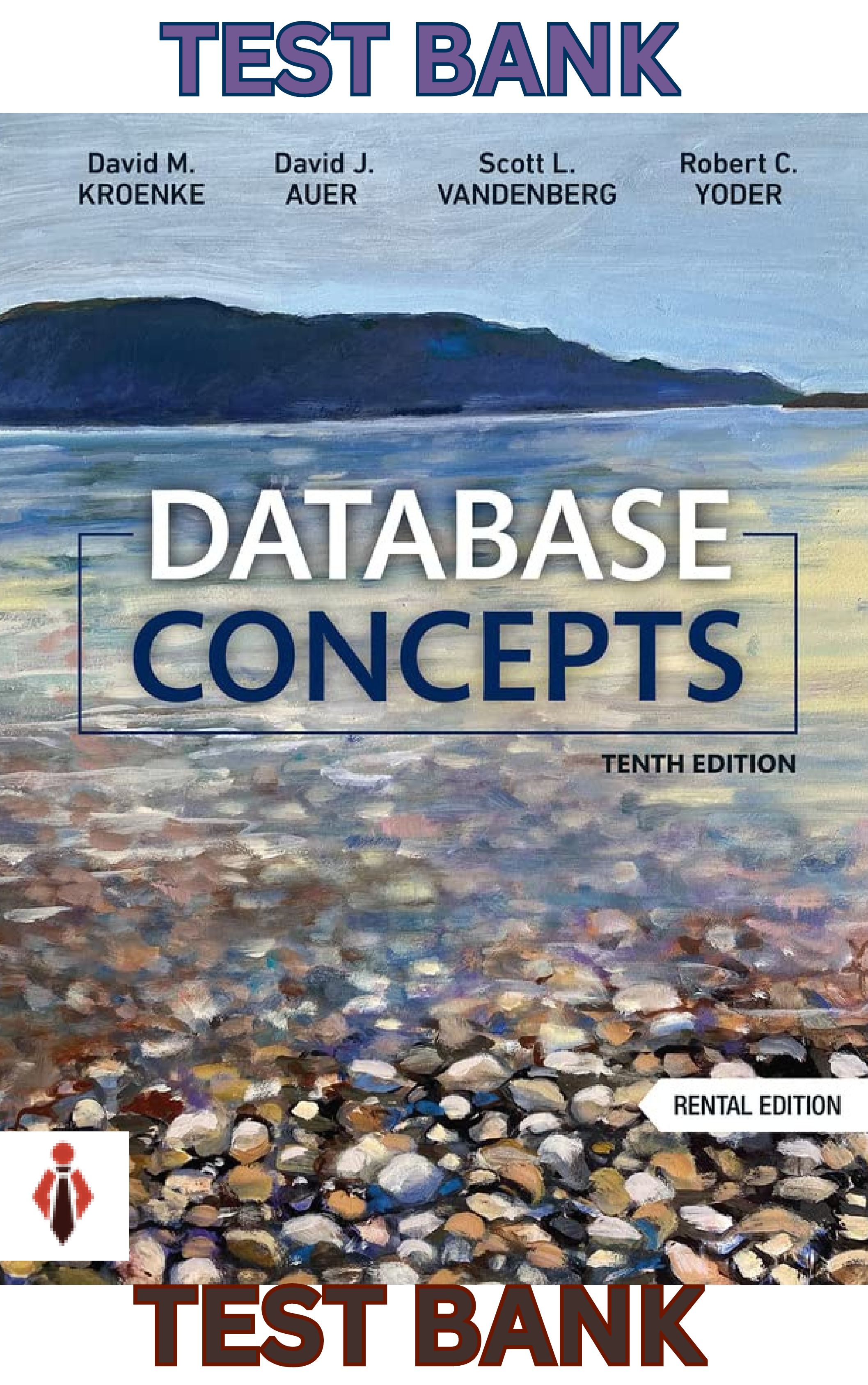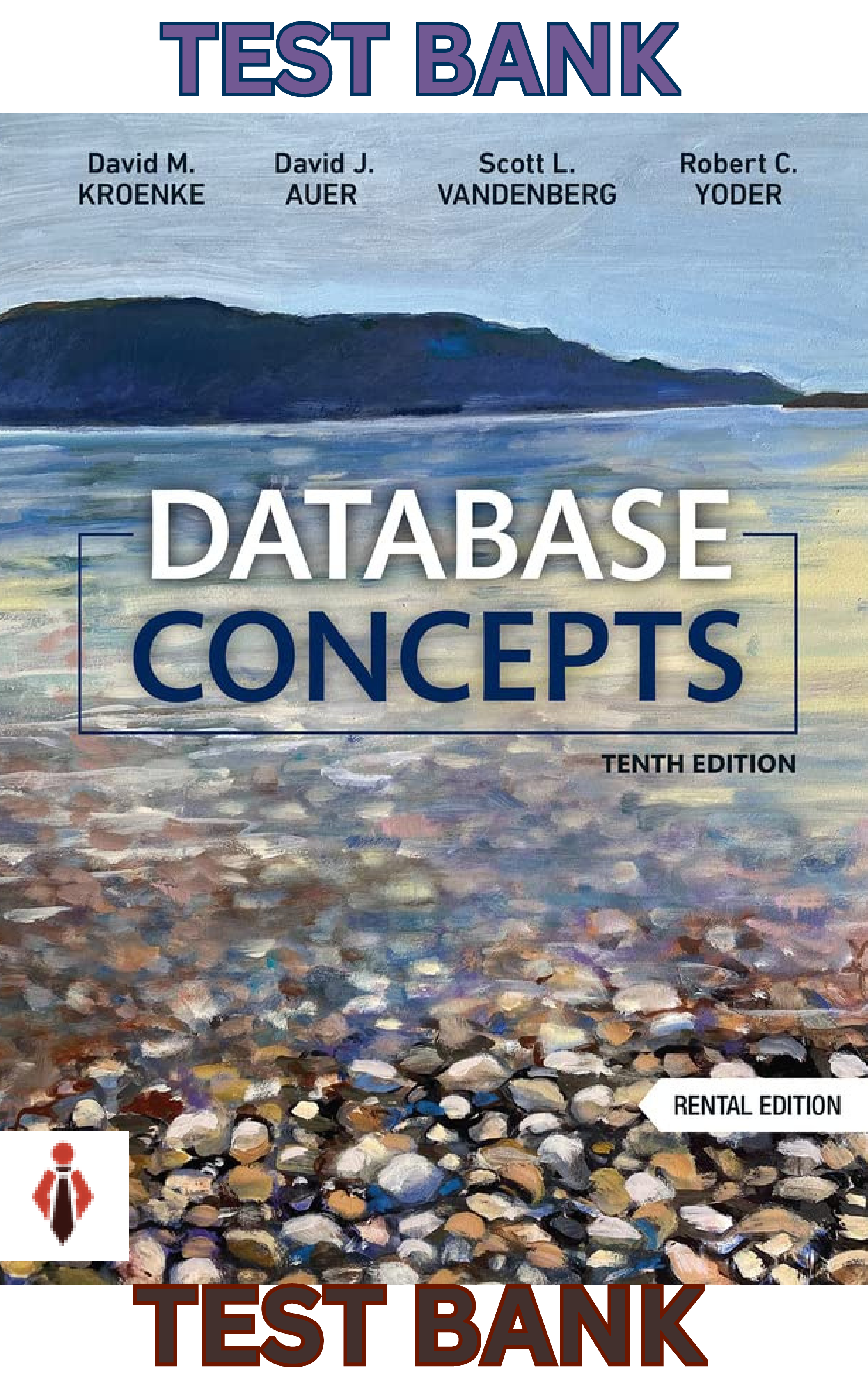*NURSING > TEST BANK > UNIVERSITY OF INCARNATE WORD. Patho Test Bank.pdf, COMPLETE QUESTIONS WITH ACCURATE ANSWERS BANK. GR (All)
UNIVERSITY OF INCARNATE WORD. Patho Test Bank.pdf, COMPLETE QUESTIONS WITH ACCURATE ANSWERS BANK. GRADED A MASTERPIECE
Document Content and Description Below
Understanding Pathophysiology 7th edition by Huether, McCance Test Bank Chapter 1. Cellular Biology MULTIPLE CHOICE 1. A student is observing a cell under the microscope. It is observed to have sup... ercoiled DNA with histones. Which of the following would also be observed by the student? a. A single circular chromosome b. A nucleus c. Free-floating nuclear material d. No organelles ANS: B The cell described is a eukaryotic cell, so it has histones and a supercoiled DNA within its nucleus; thus, the nucleus should be observed. A single circular chromosome is characteristic of prokaryotic cells, which do not have histones. Free-floating nuclear material describes a prokaryotic cell, which would not have a distinct nucleus. Eukaryotic cells have membrane bounded cellular components called organelles. No organelles describes a prokaryotic cell. 2. A nurse is instructing the staff about cellular functions. Which cellular function is the nurse describing when an isolated cell absorbs oxygen and uses it to transform nutrients to energy? a. Metabolic absorption b. Communication c. Secretion d. Respiration ANS: D The ability of the cell to absorb oxygen refers to the cells function of respiration. The ability of the cell to function within a society of cells refers to its function of communication. The ability of the cell to take in nutrients refers to the cells function of metabolic absorption. The ability of the cell to synthesize new substances and secrete these elsewhere refers to the cells function of secretion. 3. A eukaryotic cell is undergoing DNA replication. In which region of the cell would most of the genetic information be contained? a. Mitochondria b. Ribosome c. Nucleolus d. Nucleus ANS: C The region of the cell that contains genetic material, including a large amount of ribonucleic acid, most of the DNA, and DNA-binding proteins, is the nucleolus. The mitochondria is the site of cellular respiration. The ribosomes are involved in manufacturing of proteins within the cell. The nucleus contains the nucleolus, and it is the nucleolus that contains genetic material. 4. The fluid mosaic model for biologic membranes describes membrane behavior. According to this model, which of the following float singly or as aggregates in the fluid lipid bilayer? a. Peripheral membrane proteins b. Integral membrane proteins c. Glycoproteins d. Cell adhesion molecules ANS: B Integral membrane proteins float freely in the fluid lipid bilayer. Peripheral membrane proteins are not embedded in the layer, but reside at the surface. Glycoproteins act as cell surface markers. Cell adhesion molecules are on the outside of the membrane and allow cells to hook together. 5. Which of the following can bind to plasma membrane receptors? a. Oxygen b. Ribosomes c. Amphipathic lipids d. Ligands ANS: D Ligands are specific molecules that can bind with receptors on the cell membrane. Oxygen moves by diffusion; it does not bind to receptors. Ribosomes make proteins and are not involved in binding. Amphipathic lipids are a portion of the cell membrane. 6. A nurse is reviewing a report from a patient with metastatic cancer. What finding would support the diagnosis of metastatic cancer? Alterations in extracellular matrix that include: a. Decreased fibronectin b. Increased collagen c. Decreased elastin d. Increased glycoproteins ANS: A Reduced amounts of fibronectin are found in some types of cancerous cells, allowing cancer cells to travel, or metastasize. Collagen provides strength, and its breakdown is associated with osteoarthritis, not cancer. Elastin is found in the lungs and allows tissues to stretch; it is not associated with cancerous cells. Decreased, not increased, glycoproteins are associated with cancerous cells. 7. Which form of cell communication is used to relate to other cells in direct physical contact? a. Cell junction b. Gap junction c. Desmosomes d. Tight junctions ANS: A Cell junctions hold cells together and permit molecules to pass from cell to cell. Gap junctions allow communication from the inside of one cell to the inside of another. Desmosomes are not involved in communication, but allow cells to hold together. Tight junctions are barriers that prevent movement of some substances and leakages of others. 8. Pancreatic beta cells secrete insulin, which inhibits secretion of glucagon from neighboring alpha cells. This action is an example of which of the following signaling types? a. Paracrine b. Autocrine c. Neurohormonal d. Hormonal ANS: A Paracrine signaling involves the release of local chemical mediators that are quickly taken up, destroyed, or immobilized, as in the case of insulin and the inhibition of the secretion of glucagon. When cells produce signals that they themselves respond to, autocrine signaling is used. Neurohormonal signaling involves secretion of hormones into the bloodstream by neurosecretory hormones. Hormonal signaling involves specialized endocrine cells that secrete hormone chemicals released by one set of cells that travel through the tissue through the bloodstream to produce a response in other sets of cells. 9. In cellular metabolism, each enzyme has a high affinity for a: a. Solute b. Substrate c. Receptor d. Ribosome ANS: B Each enzyme has a high affinity for a substrate, a specific substance converted to a product of the reaction. Solutes are small particles that pass through the cell membrane. A receptor is a site on the cell wall that allows transport into the cell. Ribosomes are located inside the cell and are not related to the work of enzymes. 10. An athlete runs a marathon, after which his muscles feel fatigued and unable to contract. The athlete asks the nurse why this happened. How should the nurse respond? A deficiency in ________ can cause impaired muscle contraction. a. GTP b. AMP c. ATP d. GMP ANS: C The cell uses ATP for muscle contraction. when it is deficient, impaired muscle contraction results. GTP is involved in cell signaling, not muscle contraction. AMP is not involved in muscle contraction. GMP is not involved in muscle contraction. 11. Which phase of catabolism produces the most ATP? a. Digestion b. Glycolysis c. Oxidation d. Citric acid cycle ANS: D Most of the ATP is generated during the citric acid cycle. Larger molecules are broken down into smaller units during digestion; no ATP is produced during this cycle. During glycolysis, two molecules of ATP are produced from each glucose molecule, but the most ATP is produced during the citric acid cycle. Oxidation is part of the glycolysis process and ATP is produced, but more ATP is produced during the citric acid cycle. 12. A nurse is teaching the staff about the three phases of cellular catabolism. Which of the following should the nurse include? a. Digestion, glycolysis and oxidation, and the citric acid cycle b. Diffusion, osmosis, and mediated transport c. S phase, G phase, and M phase d. Metabolic absorption, respiration, and excretion ANS: A Digestion, glycolysis and oxidation, and the citric acid cycle are the three phases of cellular catabolism. Diffusion, osmosis, and mediated transport are parts of the movement of fluids in and out of cells. The S, G, and M phases are phases of cellular division, not catabolism. Metabolic absorption, respiration, and excretion are functions of the cell. 13. A runner has depleted all the oxygen available for muscle energy. Which of the following will facilitate his continued muscle performance? a. Electron-transport chain b. Aerobic glycolysis c. Anaerobic glycolysis d. Oxidative phosphorylation ANS: C When no oxygen is available, anaerobic glycolysis occurs. The electron-transport chain is part of the citric acid cycle. Aerobic glycolysis involves the presence of oxygen. Oxidative phosphorylation is the mechanism by which the energy produced from carbohydrates, fats, and proteins is transferred to ATP. It is not part of muscle performance. 14. The faculty member asked the student to identify the appropriate term for the movement of small, electrically uncharged molecules through a semipermeable barrier. Which answer indicates the nursing student understood the teaching? a. Osmosis b. Diffusion c. Hydrostatic pressure d. Active transport ANS: B Diffusion is the movement of a solute molecule from an area of greater solute concentration to an area of lesser solute concentration. Osmosis is the movement of water across a semipermeable membrane from a region of higher water concentration to one of lower concentration. Hydrostatic pressure is the force of fluid against a cell membrane. Within the vascular system, this pressure is the blood pressure. In active transport, molecules move up a concentration gradient. This process requires energy. 15. A nurse is teaching a patient about fluid and electrolytes. Which of the following indicates the teaching was successful regarding electrolytes? Electrolytes are: a. Small lipid-soluble molecules b. Large protein molecules c. Micronutrients used to produce ATP d. Electrically charged molecules ANS: D Electrolytes are electrically charged molecules. Electrolytes are not lipid soluble. Electrolytes are not made up of protein. Electrolytes do not have a role in the production of ATP. 16. A nurse is reading a chart and sees the term oncotic pressure. The nurse recalls that oncotic pressure (colloid osmotic pressure) is determined by: a. Concentration of sodium b. Plasma proteins c. Hydrostatic pressure d. Availability of membrane transporter proteins ANS: B Oncotic pressure is determined by the effect of colloids or plasma proteins. The concentration of sodium plays a role in tonicity. Hydrostatic pressure is the force within a vessel. Membrane transporter proteins are involved in active transport within a concentration gradient. 17. A patient has a body fluid of 300 mOsm/kg. This lab result is measuring: a. Osmolality b. Osmolarity c. Osmotic pressure d. Oncotic pressure ANS: A Osmolality measures the number of milliosmoles per kilogram of water, or the concentration of molecules per weight of water. Osmolarity measures the number of milliosmoles per liter of solution, or the concentration of molecules per volume of solution. Osmotic pressure is the amount of hydrostatic pressure required to oppose the osmotic movement of water. Oncotic pressure is from plasma proteins, not body fluids. 18. In teaching a patient with cirrhosis, which information should the nurse include regarding cholesterol? a. Cholesterol decreases the membrane fluidity of the erythrocyte, which reduces its ability to carry oxygen. b. Cholesterol decreases the membrane fluidity of erythrocytes, which reduces its ability to carry hemoglobin. c. Cholesterol increases the membrane fluidity of erythrocytes, which allows binding of excess glucose. d. Cholesterol increases the membrane fluidity of erythrocytes, which prolongs its life span beyond 120 days. ANS: A In cirrhosis, the cholesterol content of the red blood cells plasma membrane increases, causing a decrease in membrane fluidity that seriously affects the cells ability to transport oxygen. In cirrhosis, for example, the cholesterol content of the red blood cells plasma membrane increases, causing a decrease in membrane fluidity that seriously affects the cells ability to transport oxygen, not hemoglobin; the hemoglobin carries the oxygen. In cirrhosis, for example, the cholesterol content of the red blood cells plasma membrane increases, causing a decrease in membrane fluidity that seriously affects the cells ability to transport oxygen; it does not bind excess glucose. In cirrhosis, for example, the cholesterol content of the red blood cells plasma membrane increases, causing a decrease in membrane fluidity that seriously affects the cells ability to transport oxygen. It does not prolong the life of the RBC and could decrease it. 19. A nurse is discussing the movement of fluid across the arterial end of capillary membranes into the interstitial fluid surrounding the capillary. Which process of fluid movement is the nurse describing? a. Hydrostatic pressure [Show More]
Last updated: 1 year ago
Preview 1 out of 770 pages
Instant download
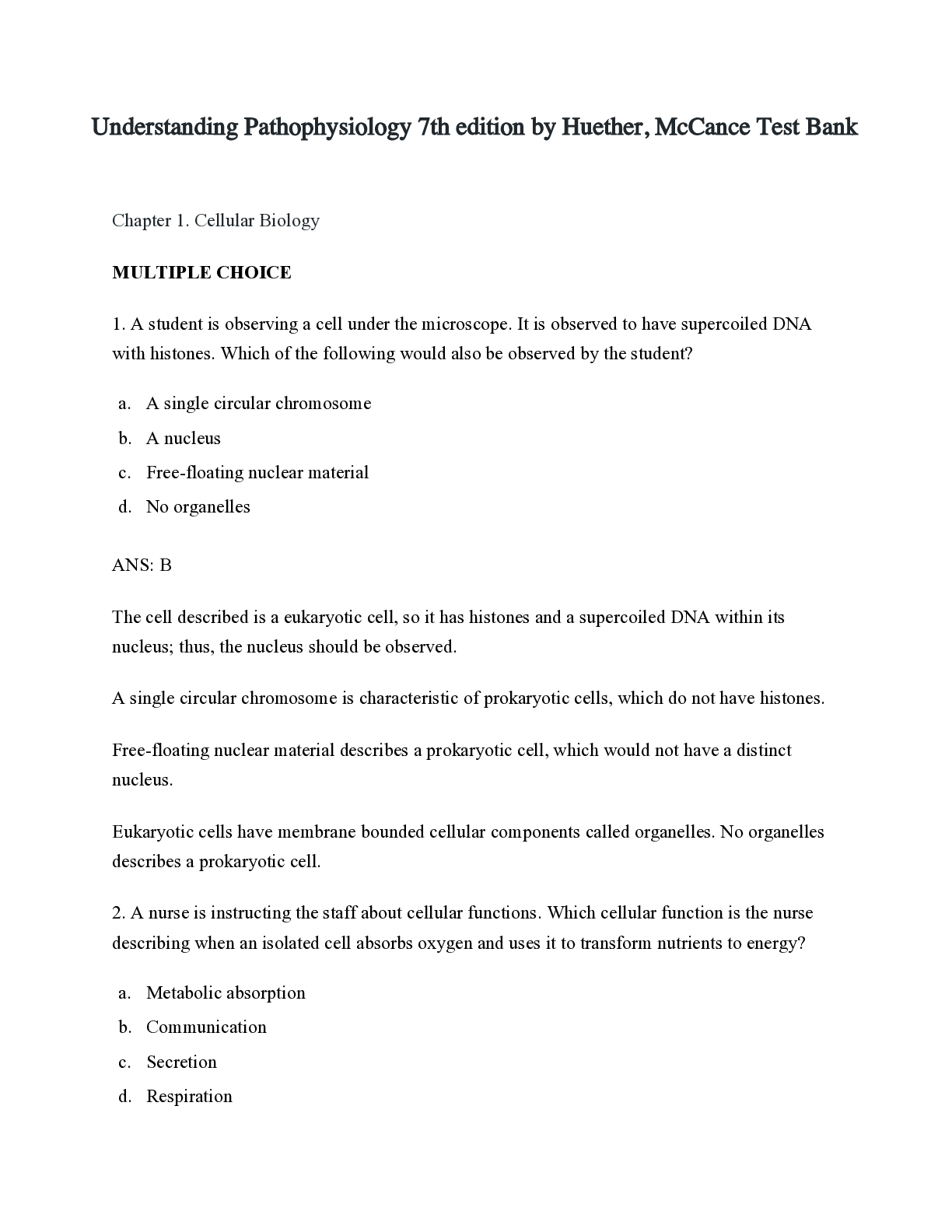
Instant download
Reviews( 0 )
Document information
Connected school, study & course
About the document
Uploaded On
Mar 20, 2022
Number of pages
770
Written in
Additional information
This document has been written for:
Uploaded
Mar 20, 2022
Downloads
0
Views
98



.png)
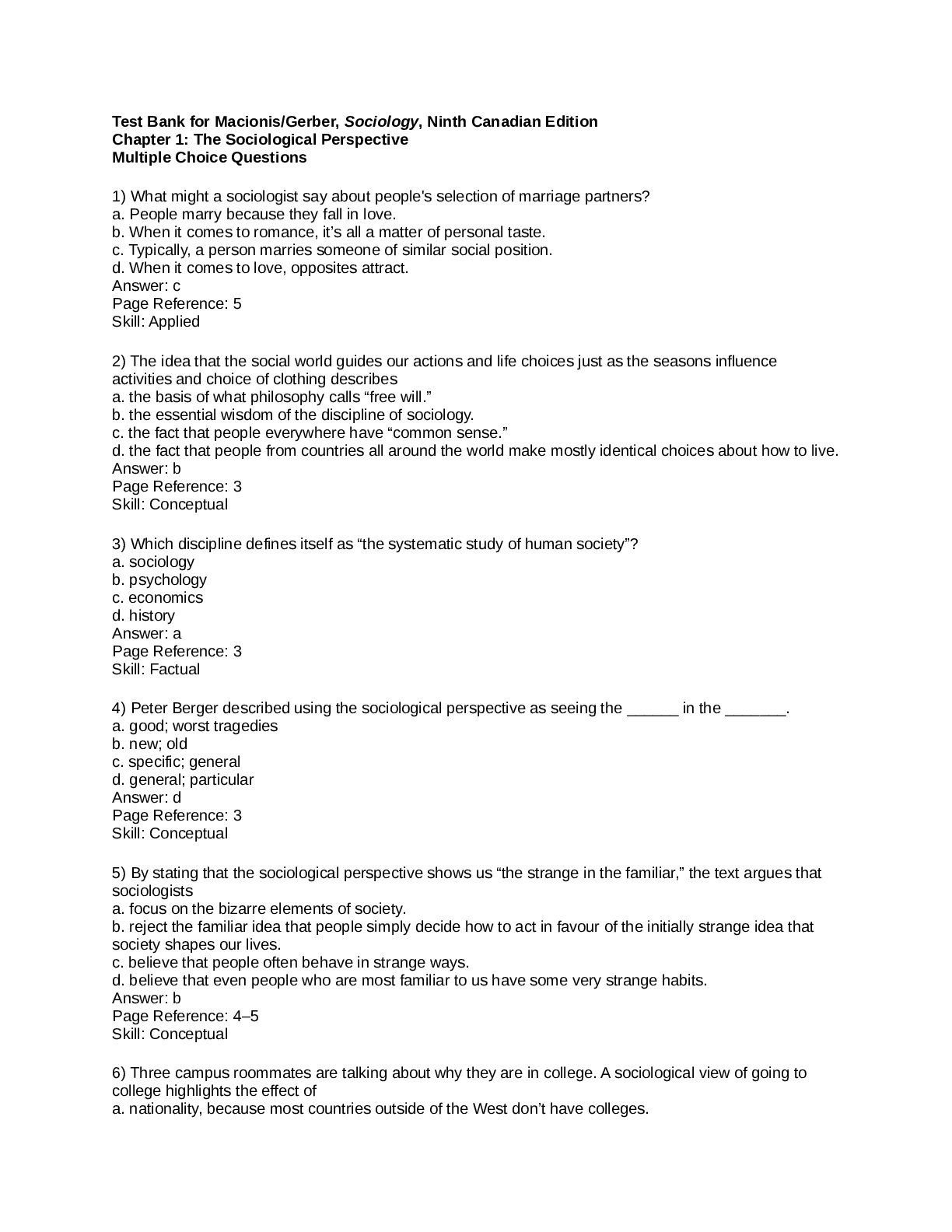
.png)
.png)
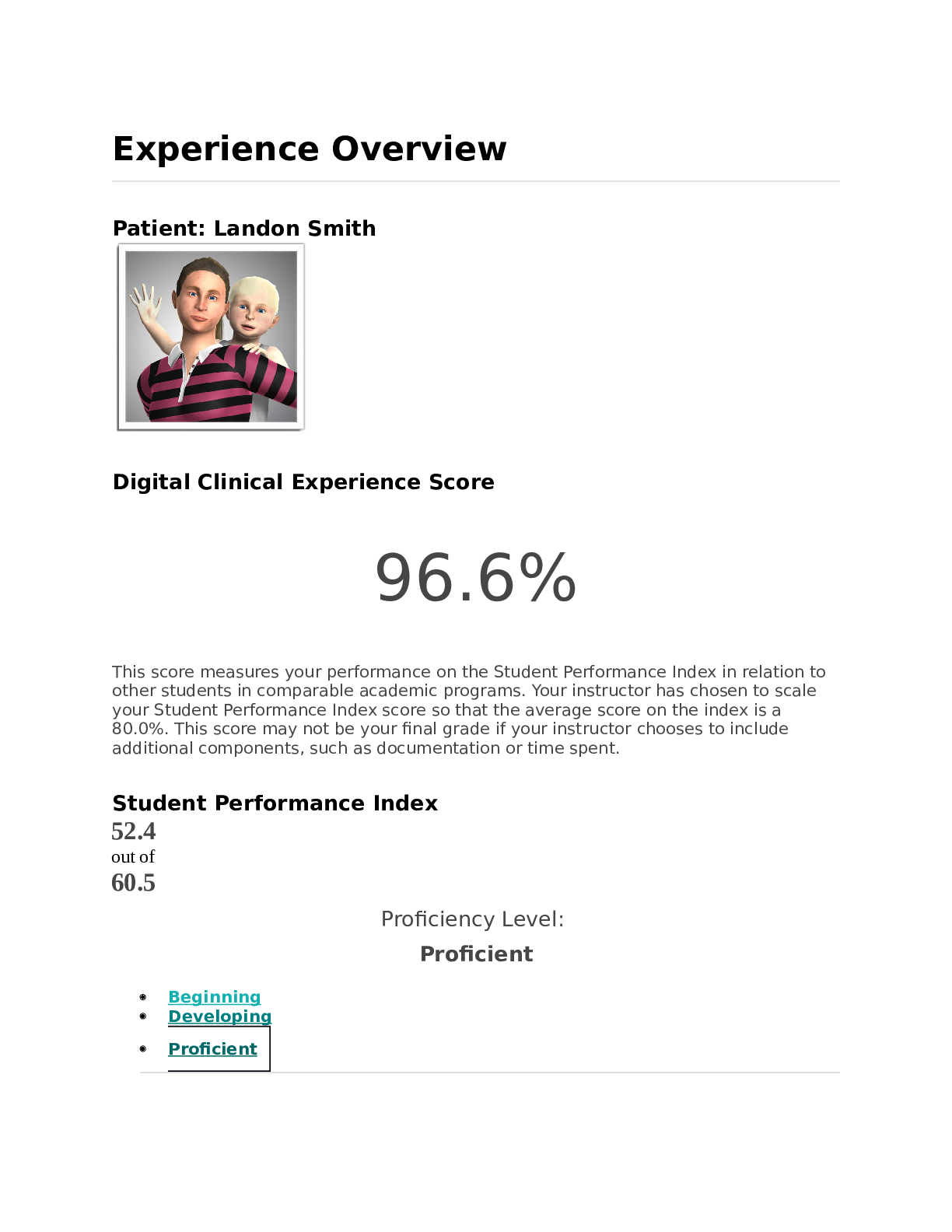
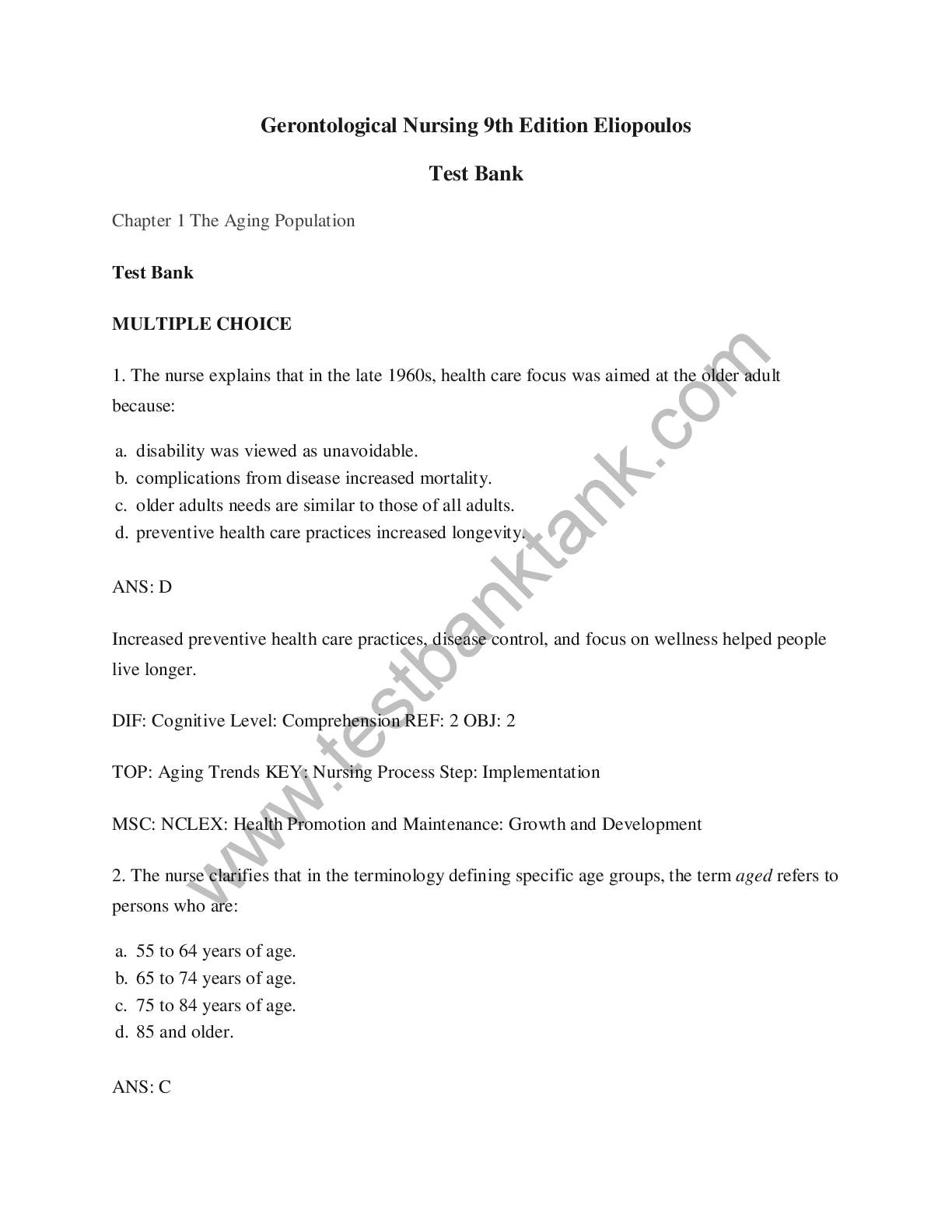

.png)
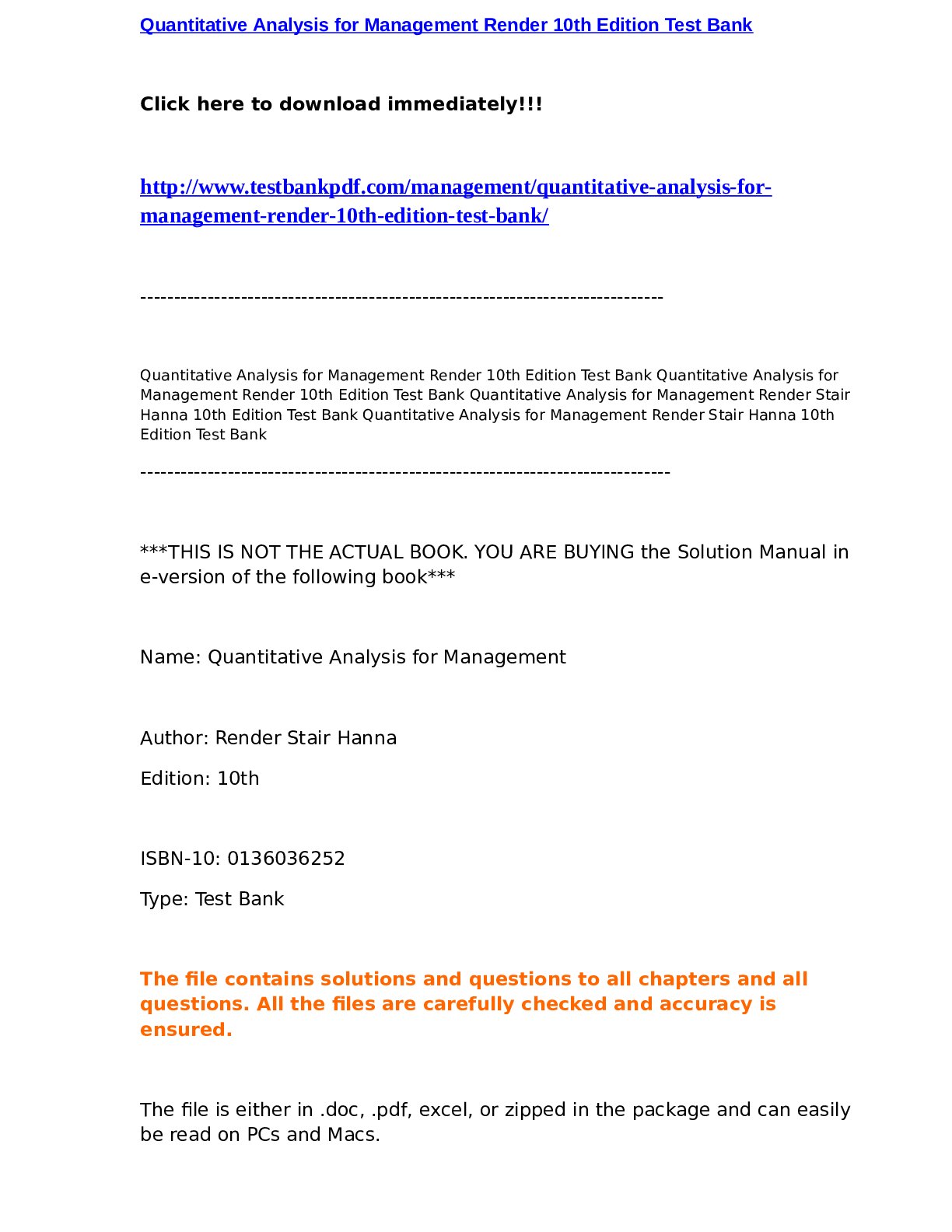
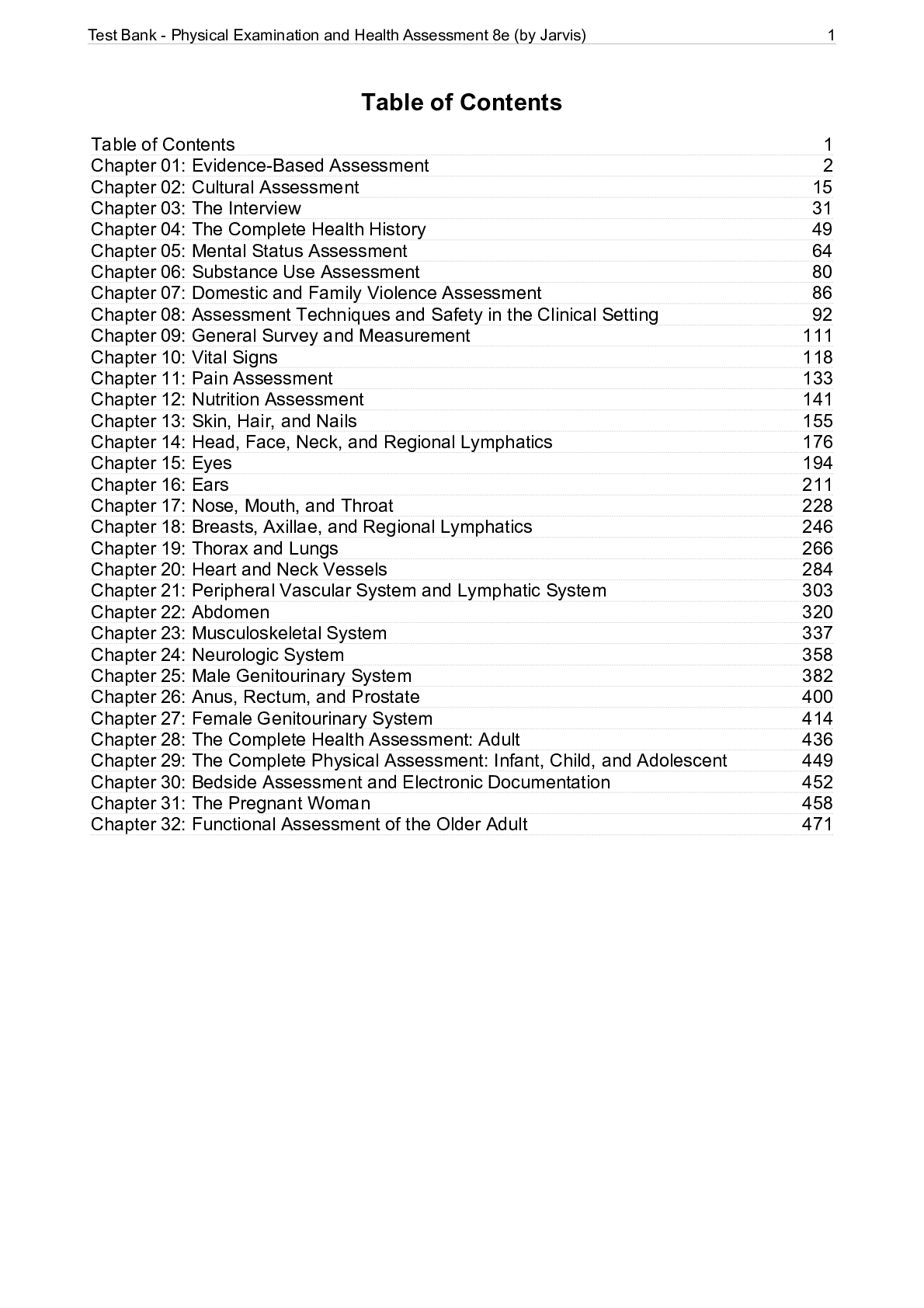

.png)
.png)

.png)
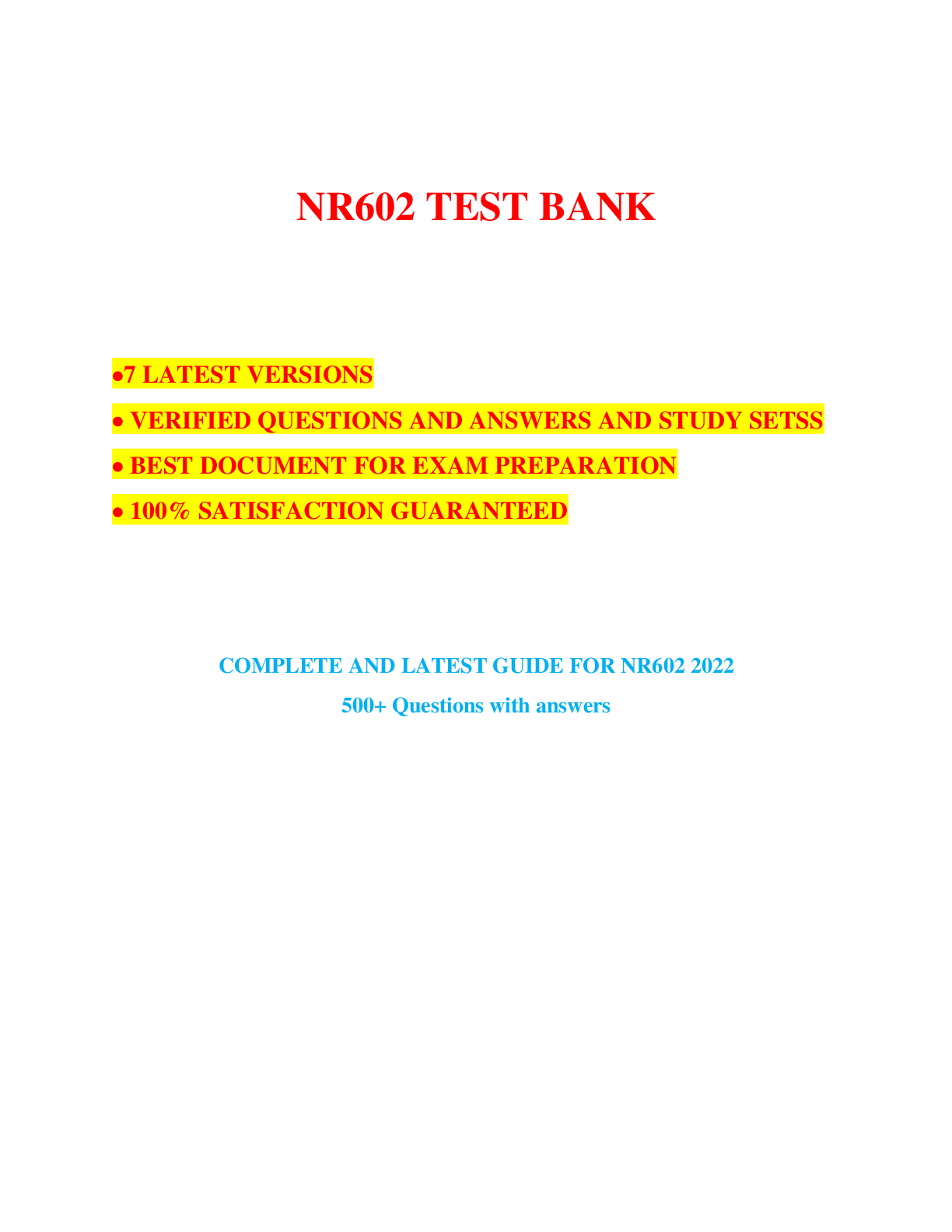
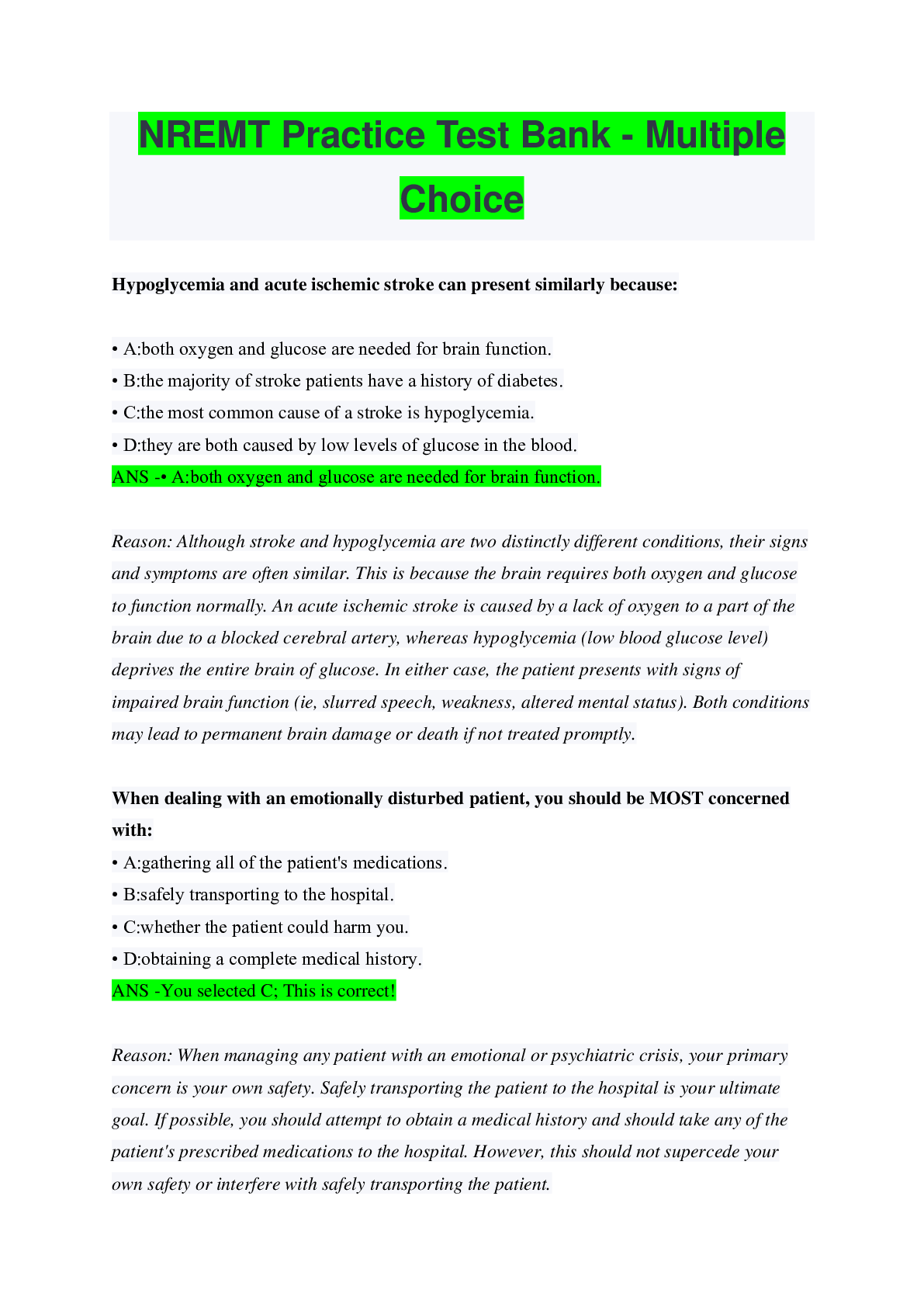
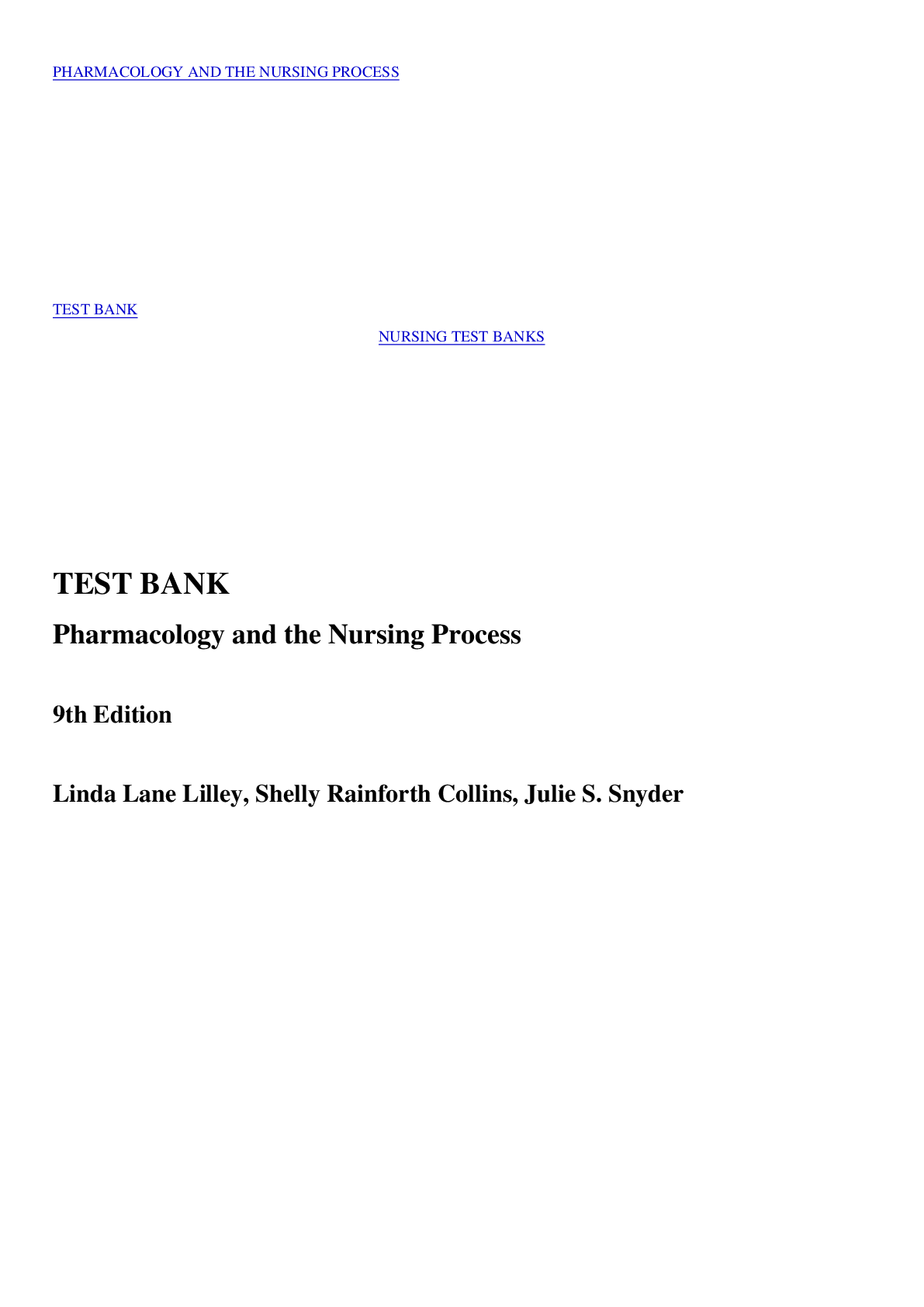
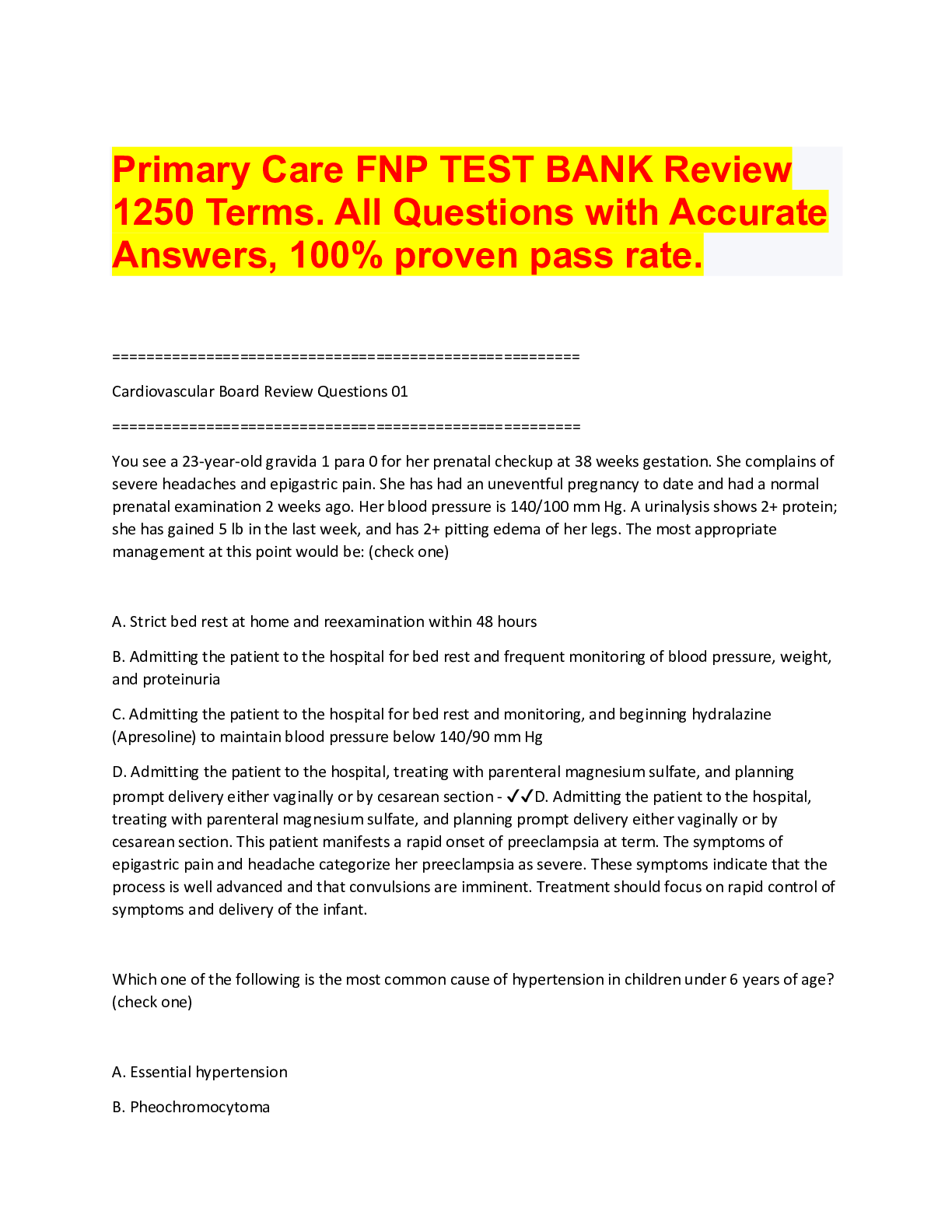
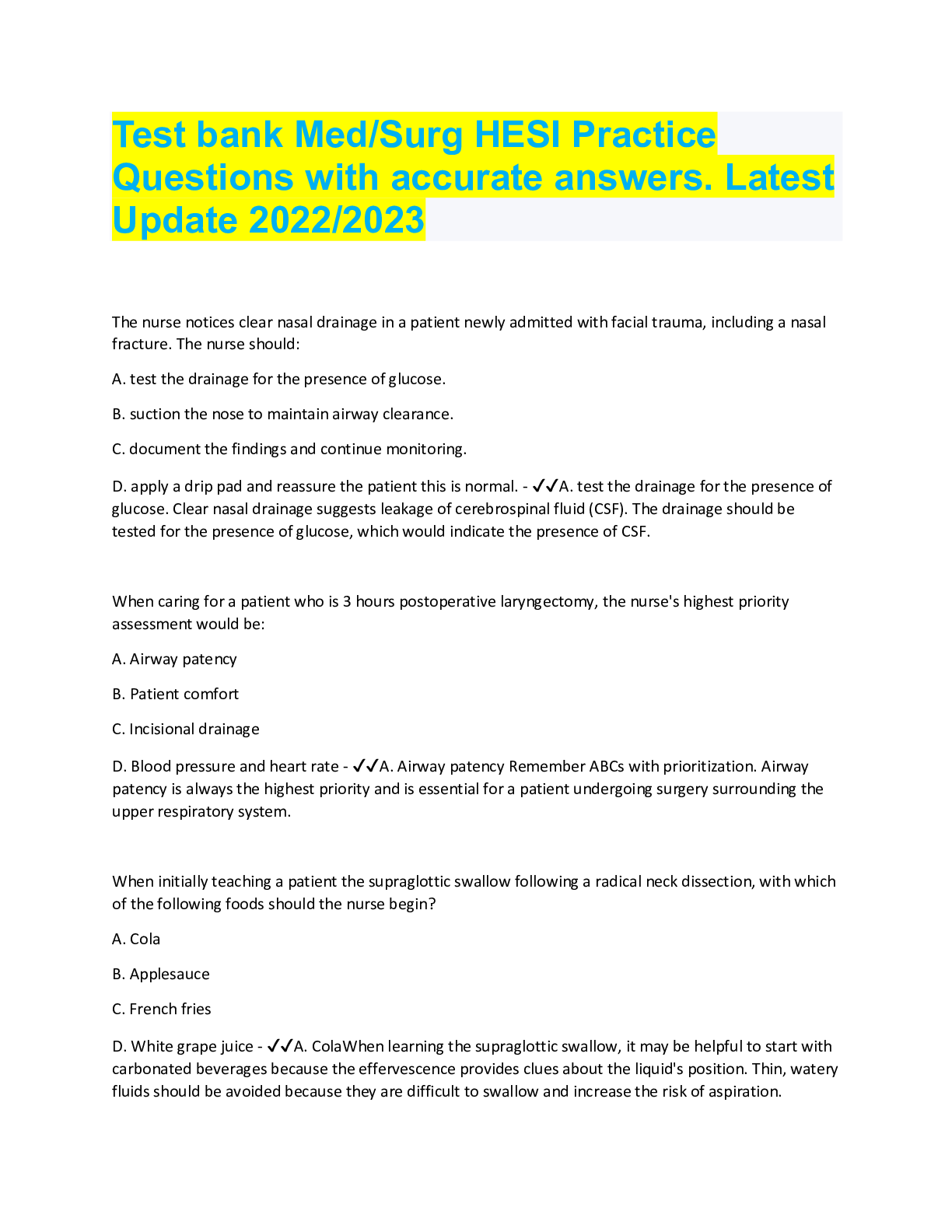
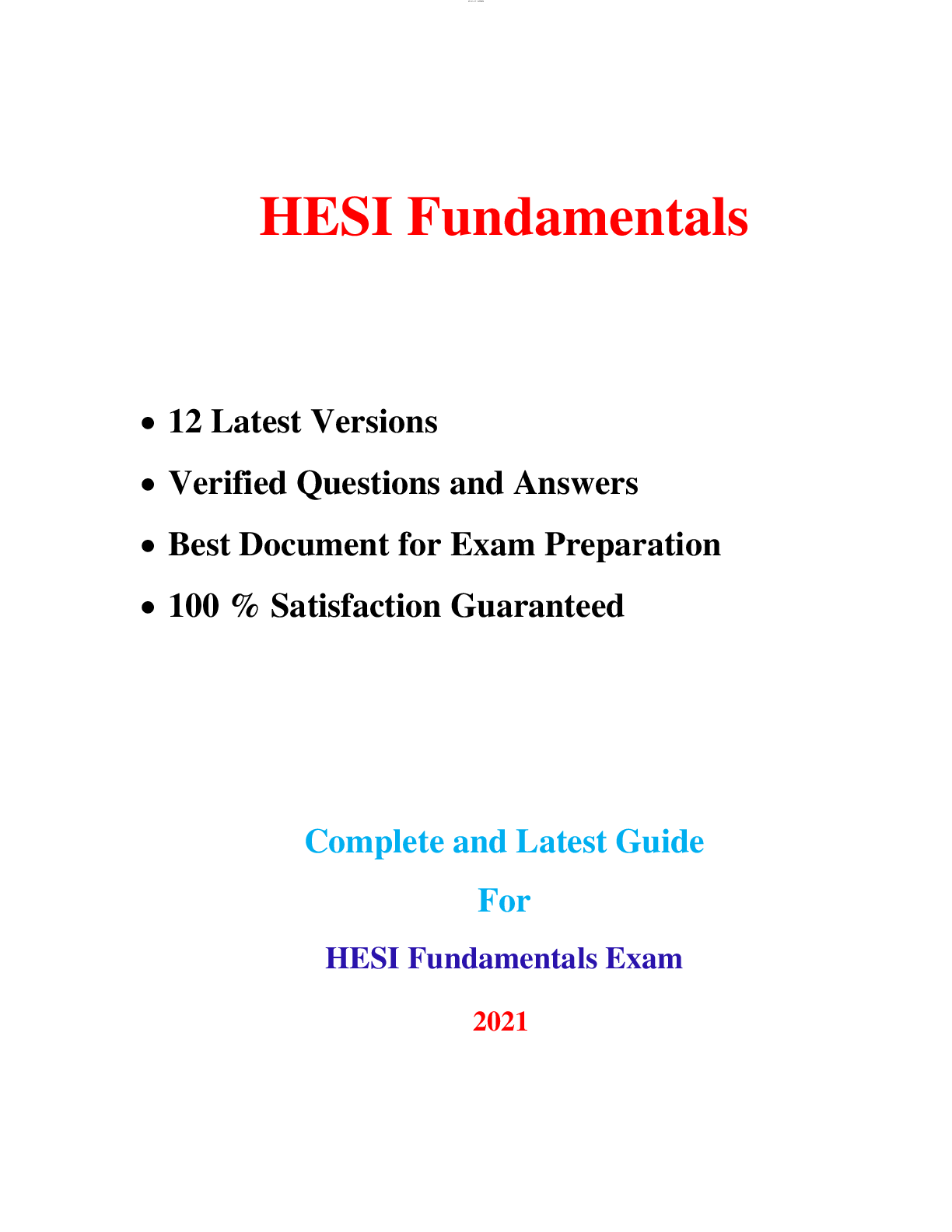

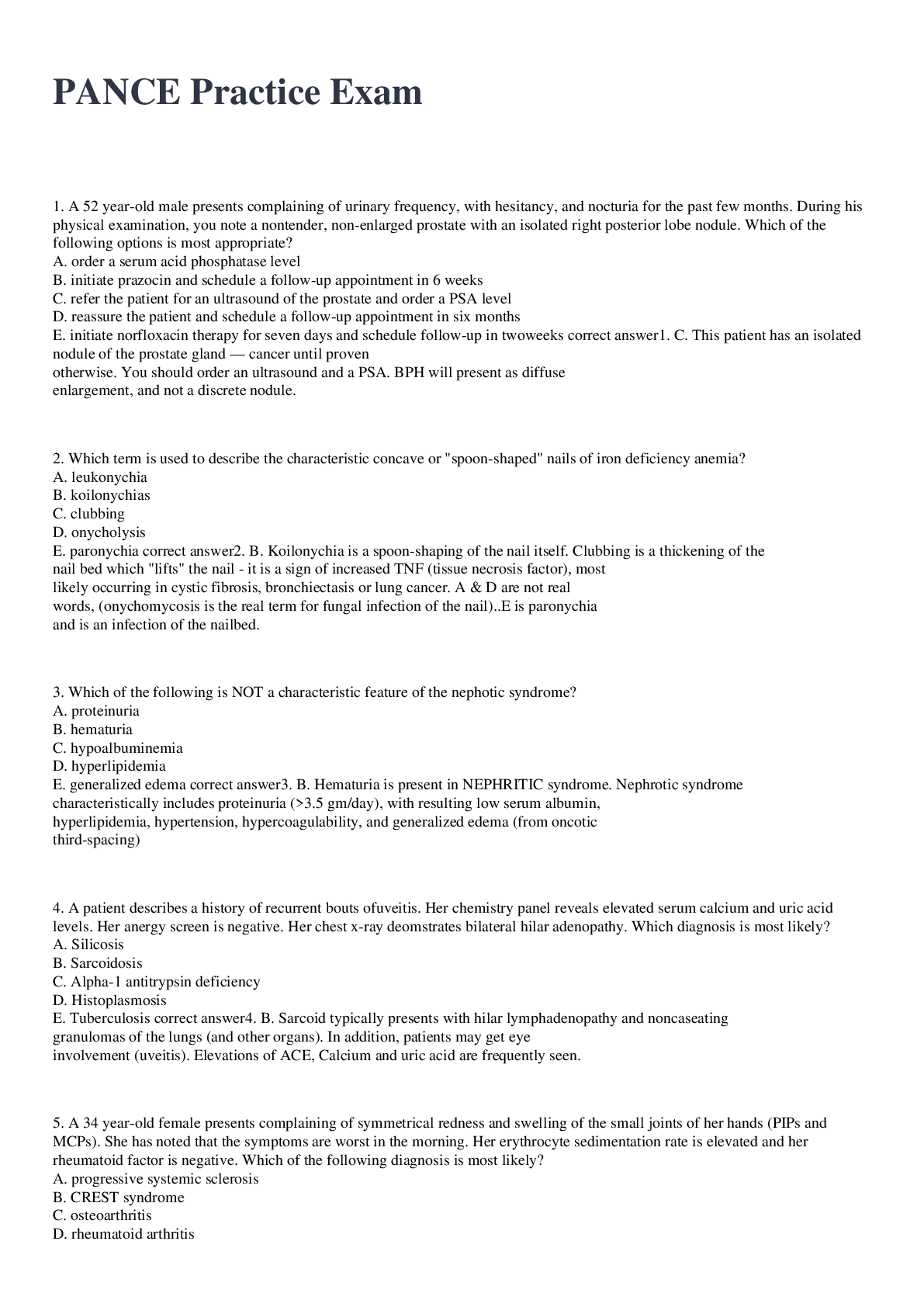

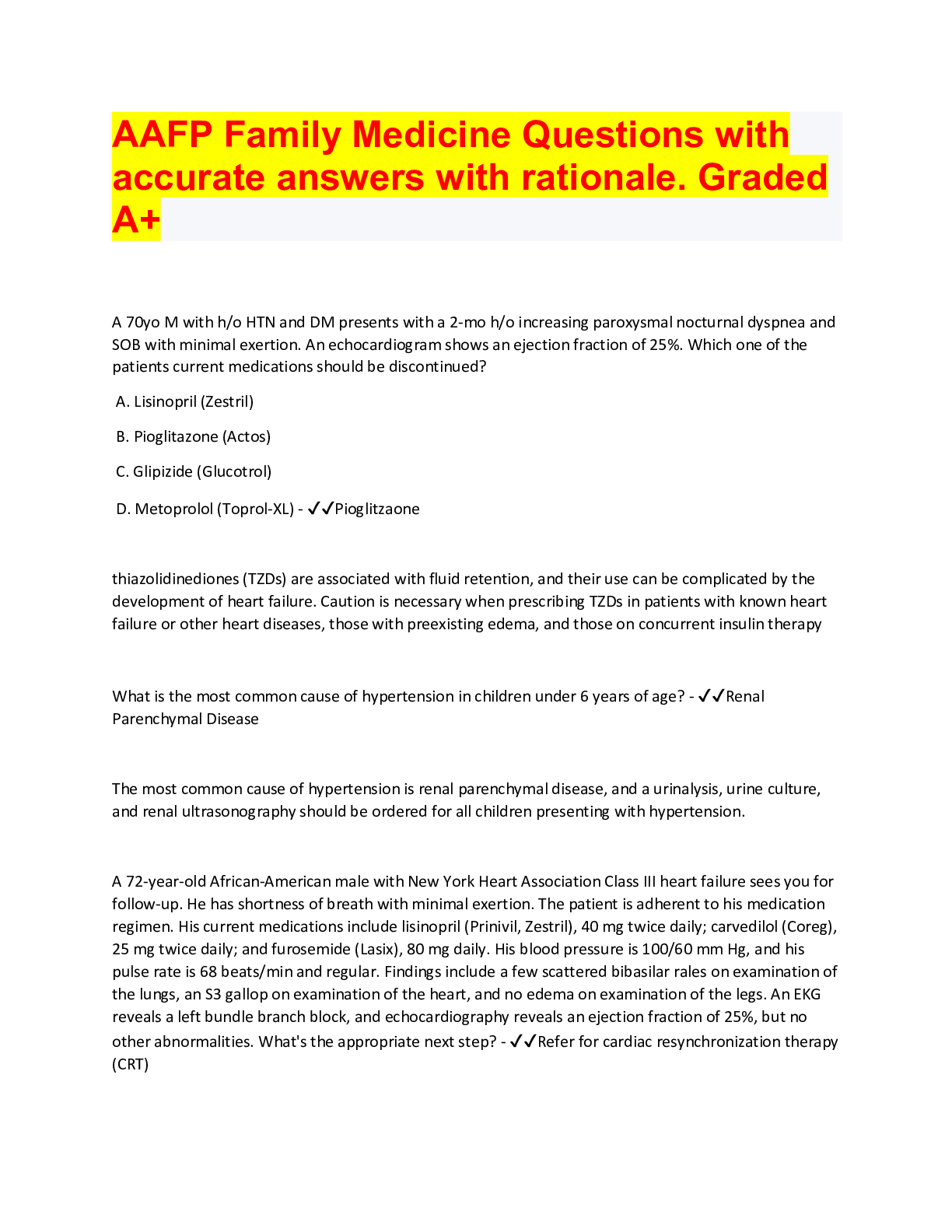




.png)

